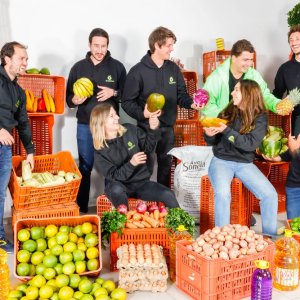What Food Service Trends Are Shaping the Future of Businesses?

STORY INLINE POST
The pandemic and resulting social confinement have reconfigured the food service industry in Mexico, perhaps like never before, causing a deep gap in consumption habits, business models and their supply. We are talking about a vital, dynamic ecosystem. Mexicans consume up to 17 different dishes per week yet the height of the health emergency saw the closure of two out of 10 establishments, most of them small businesses.
According to official data, before the coronavirus, the country's bar and restaurant industry totaled about 600,000 units, which represented 12.2 percent of all business in the country, while generating just over 2 million jobs.
However, as we adapt to the new normal, the fascinating resilience of Mexican entrepreneurs has led to the reopening of innovative new businesses, such as dark kitchens. In this shift, it is also important to understand the gravitational changes of the food service universe in two directions: the needs within (supplies, suppliers, logistics), and those that gravitate outside of it, in the popular taste of post-pandemic diners who may not be those who at the end of 2019 sat down to eat or dine anywhere outdoors, enjoying their city.
In this sense, it is time to analyze the trends in the food service industry that are marking the future of these businesses in the country
The Delivery Boom
The food delivery distributors positioned themselves as the saviors who, based on new technologies, guaranteed the delivery of food, thereby preventing thousands of bars and restaurants from closing their curtains forever. At the same time, delivery platforms and delivery independently allowed the rise of dark kitchens.
This boom resulted in food delivery becoming the main category of e-commerce, with a year-on-year growth of 66 percent, according to the results of the “Estudio sobre Venta Online 2021,” (Study on Online Sales 2021) from the Mexican Association of Online Sales (AMVO). Looking ahead, as revealed by Simplot and GlobalData’s “Tendencias para el foodservice hacia el 2022” (Trends for Food Service Towards 2022) report, delivery is expected to grow at a CAGR of 4.2 percent through 2025.
Healthy Demand
Another important factor is that, given the changes caused by a sedentary lifestyle and the limited mobility of people during confinement, food service operators must include more healthy food and beverage options. This is a response to the trend of health and well-being in the consumption habits of Mexicans, who show a need for this type of offer. Here, key factors such as the availability of superior-quality food and beverages, greater variety in menus and the freshness of ingredients will drive purchase decisions and will be among the most important factors for consumers.
Here, frozen foods — and in particular potatoes and avocado pulp — are positioned as "winning" categories, because they can remain longer in the freezer without losing their properties, which translates into savings for suppliers and food businesses. In fact, following the Simplot and GlobalData report, we found that vegetables and potatoes are already in the “responsible and healthy” category for about 15 percent of menu items in restaurants in the country.
The Search for New Flavors
In the context of the pandemic, a search for new flavors was also a focus for traditional Mexican cuisine. Before the contingency, factors such as migration, plus a good dose of aspirational culture, resulted in a greater adoption of American cuisine among Mexican consumers. This impact was seen above all in the popularity of fast-food channels.
However, there is a very marked trend toward a return to native flavors and ingredients. Among other reasons, perhaps this is largely explained as a "sentimental" response and a search for comfort through food at a time of global crisis and social uncertainty. Condiments, traditional Mexican sauces, as well as avocado pulp, still have a great deal of potential to be exploited by businesses.
As we can see, the food service industry is going through significant changes. These trends provide tools to draw a broader panorama, where diner, business and culinary culture open the way to the economic recovery of the sector and the country. After all, as the French philosopher Jean Anthelme Brillat-Savarin, author of the first treatise on gastronomy almost two centuries ago, stipulated, “Tell me what you eat and I will tell you who you are.” In this regard, I would adjust the idea a bit: When we see how and what food we sell, we know who we are and where we are going.
Luis Rodríguez Mastache is the General Director of Simplot Mexico and Americas. His strategic role is to direct, as well as develop the vision and strategies of the organization in Mexico, Central America and the Caribbean, to position the brand in all its categories (frozen potatoes, vegetables, fruits, avocado pulp and American snacks) and make them grow profitably, with the challenge of creating a winning culture within a framework of values and promoting the talent of people through it. Luis Rodríguez Mastache
























